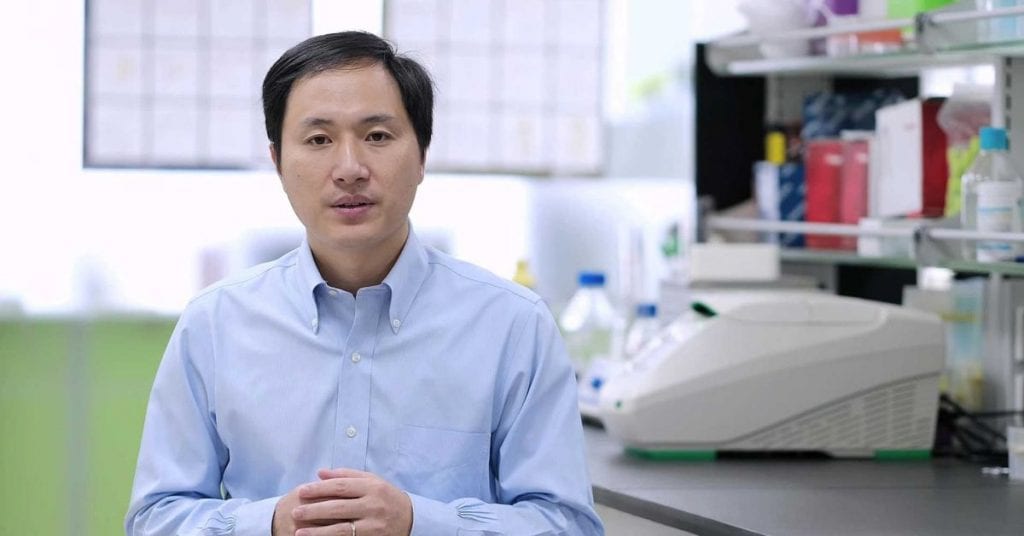On November 25, news broke that a Chinese scientist, Dr. He Jiankui, had allegedly produced the first CRISPR-edited babies, twin girls named Lulu and Nana. This set off a firestorm within the international scientific community. He has been accused of violating numerous scientific conventions, ethical safeguards, and the global consensus on human germline gene modification. The scandal has been described as “the worst possible scenario for introducing the first gene-edited babies.”
How is it that He was allowed to conduct this experiment in the first place? Were any laws broken? What’s to stop other scientists from duplicating his work?
There are several levels of national and international control over what scientific research can be conducted. From the least to the most enforceable they are: self-regulation, government regulation and legislation.
Voluntary self-regulation is the least enforceable control mechanism. These are instances, such as the 1975 Asilomar conference on recombinant DNA technology, where the scientific community recognizes the need to step on the breaks and halt all research involving a new technology until concerns regarding its safety or ethical use have been thoroughly investigated. While the organizations creating these guidelines do not have any power to enforce their rules—they aren’t regulators or government agencies, nor do they approve of or prohibit scientific experiments—self-regulation has proven itself to be an effective and reliable control mechanism. Self-regulation allows the scientific community to act quickly, while also being nuanced in its response.
The scientific consensus regarding the use of gene-editing technologies on human embryos was established in 2015 at an international summit convened by the U.S. National Academies of Science, Engineering, and Medicine, and subsequently codified by the same group in a 2017 report. While this report did not call for an all-out ban on CRISPR babies, it cautioned that heritable genome editing “is not ready to be tried in humans,” and that it should only be done in the “absence of reasonable alternatives” with “rigorous oversight” and “maximum transparency.”
He’s work did not fit those criteria. Despite this, He used the report as justification for his work, claiming in an ethics proposal that the National Academies had “for the first time” approved the use of editing human embryos to treat serious disease.
Regulation and legislation represent the most enforceable mechanisms of control. They are both enforced to the fullest extent of the law, and violation of either may lead to penalties including fines or imprisonment.
Legislation (i.e. a law) is the product of elected officials. A regulation is an administrative rule. Often, regulations actually implement a given law. Legislation can be difficult to enact (cue Schoolhouse Rock!) and even harder to change. While regulation can be quickly enacted and changed, it is subject to legislative direction and authority. Additionally, regulation can be strongly influenced by expert opinion, but legislation is viewed as more politically credible.
The overlap between legislation and regulation can cause confusion when discussing which countries “ban” human germline gene editing. While the U.S. does not have any laws that explicitly ban these experiments, FDA regulations prohibit human clinical trials involving human embryo editing and NIH regulations prohibit the funding of such research. Therefore, while human germline modification is not technically banned in the U.S., it is impossible to do it legally.
A 2014 survey of 39 countries found that 29 countries have legislation that bans human germline gene modification. The remaining 10 include nine countries that are ambiguous about its legal status, and the U.S. (Fig. 1).

He conducted his controversial experiments in China, where the legal status of human germline editing is ambiguous. Breakthroughs in gene editing technologies have far outpaced Chinese regulation and legislation. The only relevant guidelines come from a 2003 “ethics guidance” document that prohibits using research embryos for reproduction; however, this document does not specify punishments for violations.
Chinese scientists have denounced He’s work. Xu Nanping, a vice-minister for science and technology, told state-owned CCTV that He “blatantly violated China’s relevant laws and regulations,” and called for the suspension all scientific activities by those involved with the experiment. Chinese health and medical ethics authorities have launched an investigation into whether He committed a crime.
He’s work highlights a critical flaw in how modern science is conducted: isolated scientists can conduct experiments with global consequences without anyone knowing about what’s being done until it is too late. It also highlights the need for consistent international regulation of gene-editing technologies, so that scientists cannot simply conduct these experiments in countries with out-of-date laws.
Gene-edited humans are no longer the stuff of science fiction; they walk among us. The scientific community has overwhelmingly condemned He’s experiment. It is now time for those scientists to follow-through and turn that sentiment into policy.

Hi Kevin! Great to see a Hartwick alumnus kickin’ ass on an important issue!